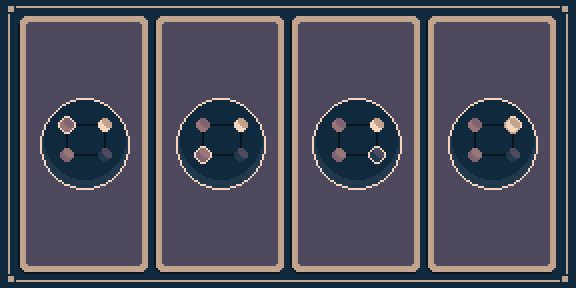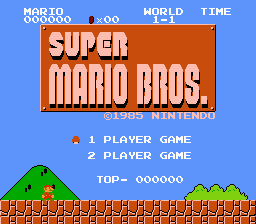Inside the Magic Circle: Understanding Why We Play
A reflection on space, rules, joy, challenge, and the invisible boundaries of play
I’m passionate reading about theory of game design and it’s principles, sometimes those topics are not technical. This time I’m not writing about systems/mechanics but I want to share my thoughts after the research of The magic circle concept and some other thoughts I had around the principles of a game.
To understand games, we must first understand why we play them. Let’s break them down
The Magic Circle
The space
The rules
The joy
The challenge
My inspiration and references for this post
Play Matters (Playful Thinking) - Miguel Sicart
The Art of Game Design A Book of Lenses - Jesse Schell
Pixel Art created by
The Space
When I was a child, I have the memories of a game I created for myself that I will never forget. I will go through the playful cicle I mentioned before using that game as example because to understand videogames first with need to do a first stop at games.
The king of pirates
At this game, I just had four elements, my parents bedroom (bigger than mine), a bed and a long basket that had a tiny door with some toys inside.
Back then I wasn’t connected to videogames much, just playing some Pokemon Yellow sessions on my Game Boy Color which I enjoyed a lot.
The long basket was solid enough to sustain my weight, so I was using it as my ship, as soon as the basket was on top of the bed, the ship was setting sail to cross the Grand line… exactly the bed was the sea.
As as child my imagination allowed me to use the objects at the basket with commercial purposes or as cannonballs to defend myself against other ships.
I was able to quickly create a playground just adding some interpretation to the space and objects around.
The relationship between play and space is defined by the tension between appropriation and resistance.
Appropriation is Key: Play is innately appropriative, meaning it takes over the context in which it exists. Playfulness is the act of using a play-like appropriation of what should not be play.
Probably we hear many times from our parents, grandma or family in general; don’t play there! In this case my parents didn’t like when I was throwing toys as cannonballs on the bedroom, which make sense.
Just to provide an example, let’s apply this to urban Appropriation. Skateboarders demonstrate this by seeing the urban landscape (rails, stairs) as a playground. Similarly, parkour traceurs appropriate and reinterpret city architecture as an expressive instrument
The Rules
Let me continue with my random childhood moments…
Rules come as the sibling of the space, meaning duality and complementarity, one doesn’t exist without the other in terms of Game Design.
Me again on top of that basket being a child and sometimes with happy parents without any need to think about toys 😅 — I had to define a set of simple rules to spend hours playing there:
Keep the balance. If I lost my balance I would fall off the boat and as I child I didn’t know how to swin, so I lose.
Boats invasion. Another boats were there (My imagination was helping here) they would be able to destroy my boat, losing again. Battle was just random and often in my favor.
Object loot. If I won a battle with other ships, I was able to keep cannonballs and trading objects
Just with those rules I already had a structure as soon as I started the game.
This is an important aspect applied to all videogames we play, some of them show the rules as soon as you start, others take more time. Super Mario Bros show score, coins, time and the world you currently are. That’s already speaking about rules.
There is no interesting space without rules, think about it… a football court without any rule applied is just shooting and running with the ball across the grass, which is something you would stop doing just after you do it for some minutes.
The Joy
Play is described as pleasurable, but the pleasures it creates are “not always submissive to enjoyment, happiness, or positive traits - Playful Thinking, Play Matters
Actually if you think about it in a conscious way everytime we play any difficult videogame like Dark Souls, Hollow Knight or Super Meat boy we are not strictly happy or positive, we have a challenge in front of us and our facial expression is not the same one than when we… have our favourite dish from our mum.
Rather than that it is a Tense activity of Joy where we are oscillating (in a matter of seconds) between being skilled enough to hit the enemy at the right timing (Sekiro moments, I love them) or we just fail and then we are being hardly hitted by the enemy… probably dying on the attempt.
That’s going to trigger some frustration on our side but there is also a pleasure on trying to improve yourself and
Applied to my king of pirates experience the Joy was just attached to the extrinsic invocation of appropriation in addition to the power of my imagination, I was taking the entire space of my parents bedroom to imagine a whole world of seas in front of me. Joy was mainly coming from exploration. Let me enumerate some enjoyment elements
The pure journey to be on the seas and imagine what’s next
My “Inventory” of objects inside the basket, as I mentioned at the beginning of my post, some of them were used as cannonballs and other elements were just to sell as soon as I arrived to an island
The movement of the basket could be enjoyed but at the same time it was risky, I was able to fall off the boat easily
The Challenge
Challenge is the dialogue between the player’s ability and the game’s resistance, again it is strongly connected with The Joy, there is no interesting challenge without some joy and the other way around, we need some reward or enjoyment during challenges to keep it going no matter what.
As Jesse Schell writes in The Art of Game Design, “Games are about learning — and the fun comes from the act of mastering patterns.
At the king of pirates I had many challenges that kept me on that playful state for hours:
Other boats could destroy my ship, if that happen, I was losing all the items I had on the basket starting from scratch again
Keep the balance of the small basket was a challenge itself
My main mastering pattern was to avoid falling off the boat, which was something easier than you may think as a lightweight child.
Rewards
Randomly find other islands (of course, on my imagination)
Defeat other boats to obtain objects
The Magic Circle
Hello. I’m the Godfather of the the previous elements, I’m the Magic Circle.
We’ve been through all the fundamentals principals of a game, because here we are not speaking about videogames itself but how those concepts connect together to create our concept of Play.
The Magic Circle is one of those fascinating ideas that keeps coming back every time I read about game design theory. It was reinterpreted beautifully by Katie Salen and Eric Zimmerman in Rules of Play: Game Design Fundamentals (2003).
They describe it as that invisible boundary separating the world of the game from the real one — a sort of “contract” we all agree to when we start playing. The moment you pick up the controller or sit down to roll the dice, you’re stepping into another space where different rules apply, where meaning shifts, and where failure or victory only matter inside that circle.
A example always help on those abstract reflections, let’s think about ping pong.
The moment we grab the paddle and the ball hits the table, something subtle happens — the ordinary world pauses. The table stops being just furniture, the ball isn’t plastic anymore, and the paddle becomes an extension of ourselves.
We’ve entered into a temporary reality with its own rules, limits, and meaning.
Once the match ends, the table goes back to being a table, and the ball rolls quietly to the floor. The spell fades. But for that short time, we were somewhere else — inside the magic circle.
Out magic table is nothing without cards, the same way a virtual or real space is not a game without rules, enjoyment and challenges.









